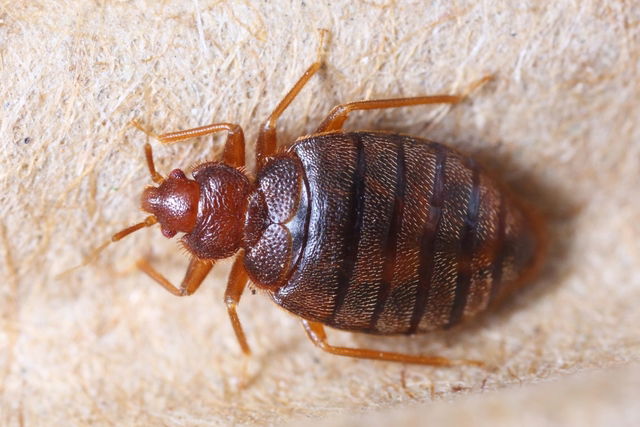Bed bugs (Cimex lectularius) are small insects that feed off of the blood of humans and animals. Bed bug bites usually disappear within one to two weeks and generally do not cause systemic illnesses. However, they do cause an allergic skin reaction which can be intense in some people.
Some people do not have any reactions to bed bug bites and do not present with any bite marks. However, others may have a severe reactions with intense itching, blisters and infection.
Beg bugs are a reddened brown color, are wingless, and are about the size of an apple seed. They hide in the cracks and folds of beds, mattresses, or headboards.

Main symptoms
The most common symptoms of bed bug bites are:
- Inflamed spots which are often darker in the middle
- Itching or burning in the affected area
- Bite marks that appear in linear patterns
- Bite marks that are located on the face, neck, arms, hands, legs, or back
Beg bug bites tend to appear on areas of the skin that are most exposed. In most cases, the symptoms emerge almost immediately after the bite, however they can also take a few days to develop or progress. These symptoms tend to resolve within 1 to 2 weeks.
If you notice bug bites as well as symptoms like difficulty breathing, fever, nausea, a swollen tongue or irregular heartbeat, you should seek urgent medical attention, as these are signs of a severe reaction.
How bed bugs bite
These parasites tend to venture out at night and feed during sleeping hours. Although it is not always easy to identify these lesions as particularly bed bug bites, most of these bites are larger and more swollen than those of other insects. Bed bug bites usually present as multiple bumps, welts, nodules or purpuric lesions.
Bed bugs are about the size of an apple seed, have a reddish-brown, flat, oval body. After feeding on blood, their body becomes more reddish. You may find bed bugs around the house, which is one way to narrow down the cause of this skin reaction, although you may also notice bed bug feces or blood on clothing, your mattress, or linens.
However, if you do not come across any evidence of bed bugs in your home, and you experience red spots as well as other symptoms (like a fever), it is possible that the red spots may be related to another condition. Learn more about what can cause red spots on the skin and what to do.
How to treat bed bug bites
The first step of treatment should be cleaning the wound with water and mild soap to prevent infections.
Most bites will heal on their own within a week or two. However, if the bed bug bite causes a lot of discomfort, such as pain or swelling, you can consult a doctor, who may prescribe medications such as topical corticosteroids or oral antihistamines.
In more serious cases in which the bed bug bite has become infected, the doctor may also prescribe antibiotics.
Where bed bugs bite
Bedbugs generally hide where people live. They burrow in mattresses, cracks and folds in linens, clothing, luggage, holes in the wall or furniture. They come out at night to feed on humans as they are attracted to body heat and CO₂ emissions from breathing.
These parasites live between 5 to 12 months and can go without feed for up to a year. Bed bugs are particularly common in places with nocturnal uses, such as hotels, hospitals and homeless shelters.
Other places these insects can be found include beneath peeling paint, within the seams of upholstery, carpets, baseboards, or under electric plates.
Prevention for bed bug bites
Some measures that can help to prevent bed bugs include:
- Protecting as much of the skin as possible when sleeping, by using long sleeve pijamas for example.
- Carefully inspect used beds or furniture by checking cracks, mattress seams or openings for bed bugs. You should disinfect any used furniture thoroughly before brining it into your home.
- Fill or seal cracks, crevices, and seams with products like glue or caulking.
- Wash your bed linens regularly at high temperatures.
- Use a vacuum cleaner to clean your pillows and couches regularly, making sure to remove cushions and pillowcases.
- Take time to inspect sleeping areas that accommodate many people, like hotels, camping lodges and residential facilities.
Una vez que las chinches se encuentran en la casa, se reproducen rápidamente, y en este caso, la mejor manera de evitar la picadura de chinche es que se realice una desinfección para eliminarlas, contratando a un exterminador de insectos.
